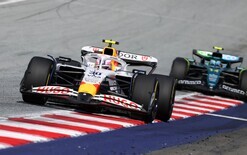Soft market hits 2 Cheap

2 Cheap Cars experienced a “challenging and disappointing year” with 2024/25 reflecting New Zealand’s recessionary economic conditions.
While the business remained profitable, delivering net profit after tax of $3.3 million did not meet expectations.
The company believed its strategy would remain resilient against the prolonged downturn, but in practice this didn’t prove to be the case.
Soft market conditions, a sharp fall in immigration and an uncertain regulatory environment underscored the importance of adapting strategy, becoming nimbler and continuing to evolve operations.
The weaker market led to a six per cent decline in revenue to $82m, reports chief executive officer David Sena and chairman Michael Stiassny, pictured above.
While full-year finance and insurance penetration rates remained stable at 27 and 36 per cent respectively, lower sales volumes and average commission resulted in a total F&I revenue decrease.
Gross margins were also squeezed due to pricing pressure as the group selectively discounted to maintain turnover in a soft market and shifts in consumer behaviour.
The contribution margin for financial year 2025 was $17.8m, down 14 per cent from $20.7m in 2023/24. The gross margin percentage dropped from 24 to 22 per cent.
While margin pressures existed, the company continued to focus on internal efficiencies by insourcing more of its compliance and refurbishment activity.
These initiatives helped limit the impact of increased third-party costs and supported contribution margin stability despite volume and revenue headwinds.
Revenue was boosted by $1.7m related to carbon credits generated and retained in the prior fiscal year, but not previously recognised due to regulatory uncertainty regarding their realisation.
This revenue was then partly offset by $1.1m of carbon credit costs associated with net credits attached to vehicles sold in financial year 2025.
While the company was able to partially mitigate the impacts of those pressures, the result reflected a soft retail environment and rising costs that could not be fully offset.
Despite the challenges, the company remained cash-flow positive by generating $6.7m in operating cash flow. It declared a final gross dividend of 2.97c per share to take the year’s total to 6.03c, which was in line with company policy.
However, achieving profitability was hard won in the face of significant external cost increases, most notably the continued escalation of fees from third-party listing platforms. “These costs rose sharply and now represent a material drag on profits,” say Sena and Stiassny.
While the company made progress controlling in-house costs and insourcing parts of the value chain, the impact of external cost inflation – particularly from third-party digital advertising channels – was unavoidable and damaging.
In response, the company is now focused on improving its direct-to-consumer digital channels and “reducing reliance on expensive intermediaries as a top operational priority”.
Shifting demand, strategic response
2 Cheap Cars reports that a significant shift in buyer behaviour emerged in the past financial year, which was driven by regulatory changes and evolving consumer priorities.
Initially, hybrid and electric vehicle (EV) sales were weaker as a delayed consequence of the removal of the clean car discount. An increase in the clean car standard’s fees then marked a “clear inflection point in demand patterns”.
In the first half of 2024/25, hybrid and EV sales lagged behind the prior year, reflecting a softening in consumer appetite – likely driven by price sensitivity and uncertainty around evolving regulatory costs.
However, from December 2024 onward, the company observed a “sharp turnaround” as cost-conscious customers chose lower-emissions models.
Hybrids and EVs not only rebounded in volume, but “decisively” overtook petrol vehicles in sales mix, climbing to 61 per cent of monthly sales in the fourth quarter – up from 48 per cent in the third quarter.
Sena and Stiassny comment: “This shift indicates a growing consumer preference for fuel-efficient, emissions-compliant vehicles, driven in part by the economic consequences of the new fee regime.”
The company’s Japanese procurement team and New Zealand operational hubs responded swiftly, ensuring the right vehicles reached the right markets.
However, the rapid pace and sustained impact of regulatory changes and foreign-exchange volatility made planning particularly challenging as the situation was constantly evolving. “This has reinforced the need for increased flexibility and agile execution.”
Outlook for rest of 2025/26
2 Cheap Cars has entered the 2026 financial year with “clear priorities”. These are improving execution, enhancing control over marketing channels, and safeguarding margin in an increasingly competitive and costly environment.
Despite the uncertain economic landscape, the company’s core ethos remains unchanged as “there will always be demand for affordable, fuel-efficient vehicles”.
Stiassny and Sena add: “However, capturing this demand profitably will require continued cost management discipline, relentless focus on operational efficiency, and a step-change in digital engagement and conversion across the company’s own platforms.
“As an importer of Japanese used vehicles, 2 Cheap Cars remains exposed to risks associated with regulatory changes in the treatment of carbon credits.
“To mitigate this, the company intends to expand its local-vehicle acquisitions through trade-ins and wholesale channels to diversify its vehicle sourcing.”
It adds 2024/25 served as a reminder that profitability is not guaranteed even when the product meets market conditions.
“To protect and grow earnings, the company must reduce its reliance on high-cost third-party platforms, and continue developing a direct, scalable and sustainable sales engine, for future success. This is our unwavering focus in the year ahead.”





